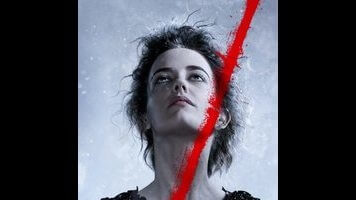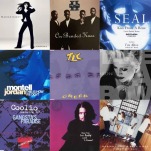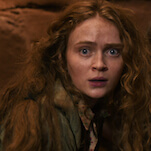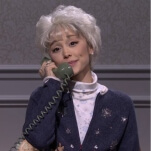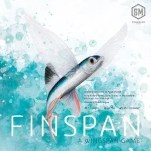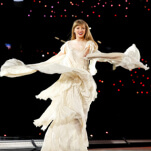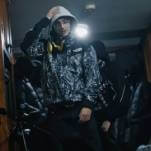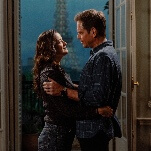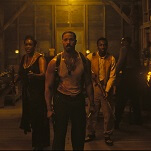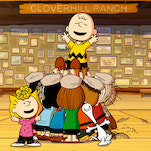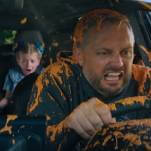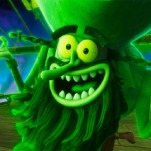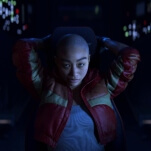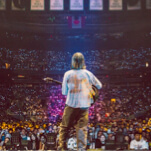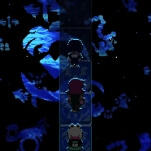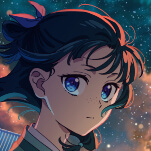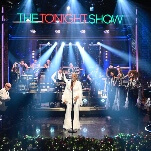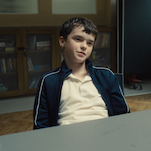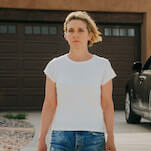The center of that atmosphere remains Eva Green’s Vanessa Ives. Trading on Green’s gimlet-eyed stare and fathomless voice, Penny Dreadful smartly places her in the focal point of the action. Vanessa’s barely contained fury rockets her past the damsel-in-distress she could easily be, and instead offers a glimpse of someone deeply haunted and trying to oust demons she’s not even sure how to name. Her fears only get deeper this season, as another of the Devil’s cadres is on her heels. So far, that terror seems to be overwhelming her nerve, and hopefully she’ll get back some of the signature ferocity that made last season’s séance scene one of the year’s best 10 minutes. Doubtless she will; the first two episodes of season two are more occupied with setup than showpieces. In the meantime, Vanessa makes for one of the small screen’s most intense penitents.
She’s the center of a cast that maintains an almost-inexplicable equilibrium despite the sort of disparate acting styles that usually spell disaster. Josh Hartnett’s understated naturalism, Harry Treadaway’s peevishly arrogant BBC angst, Timothy Dalton’s scenery-chewing, and Danny Sapani’s gravitas all operate together, an easy mishmash that works with horrified stares and grim humor like any good pulp novel should. Not everybody’s so lucky: Reeve Carney’s Dorian is even more adrift this season, and Rory Kinnear’s Caliban seems to be scrabbling for angst in the face of Vanessa’s much bigger problems. Billie Piper is resurrected from a part so perfunctory the show scraps all evidence of it right down to the accent. But there’s something to be said for a cast where any two characters could sit down and be interesting—and for a writer who lets them, just to see what character beat the actors can wring from it.
Naturally, it follows that one of Penny Dreadful’s problems is that among so many characters, it’s actually hard for the horror to get much breathing room. Not in imagery—there’s creeps aplenty there, and the show revels in its prerogative not to explain things. (Some of its best occult symbolism exists so far for its own sake.) But amid all that saturated atmosphere, the villains can get flattened by the pressure and edged out for time. This season, which picks up almost directly on the heels of last season, still has a sense that characters inhabit their own chronologies, and time goes only as fast or slow as the character needs peril to develop. Such flat villains mean the buildup can overshadow the payoff. While having Mina as the slightly Sapphic agent of an off-brand Dracula was pulp gold on paper, her arc ended abruptly and left the first season with a distinctly “What now?” denouement that felt like it was retconning itself in real time.
On the other hand, a show that felt like 10 episodes of plot in an eight-hour jug won another two episodes for its second season; even as a numbers game, hopefully this new villain arc will fare better. This time, it’s witches, as over-the-top as Victorian horror allows (every naked-screaming, baby-eating, blood-bathing inch of them). And the gloriously arch sun at the center of this coven is Helen McCrory, who’s sublime in a part that requires both high camp and genuine menace. She nails the former effortlessly with every cackle and monologue, and nails the second in moments like the bloody-bathtub scene from the teaser, which gains some new ineffable creepiness in situ despite its familiarity. Pitting McCrory against Eva Green with the Devil in the middle might be worth the price of admission all by itself.
Under the direction of James Hawes (who returns to the series after two appropriately over-the-top episodes at the end of last season), the visuals swing from Victorian-lush to slightly unsettling in a comforting Hammer-horror way. Besides the trappings of period horror—which have expanded to include a wax museum so perfectly seedy it trumps the Grand Guignol—every nighttime room is soaked with shadows, every slow pan suggests a build to something awful. Half a dozen tortured souls whose trials have just begun get richly lit, lingering close-ups. It’s a gorgeous backdrop that’s often a little short on canvas for the story it means to tell. But on the strength of its cast, the beauty of its design, and the sheer joy it gets from its homages, it’s the sort of dreadful that’s mostly a delight.
